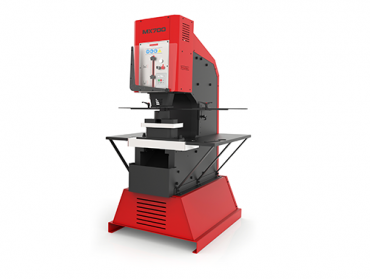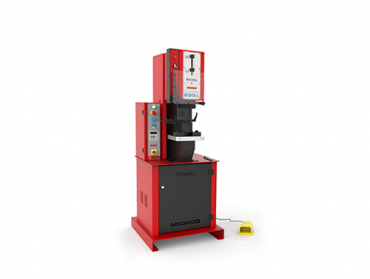Universal Punching Machines MX340G NARGESA with 40 tons and MX700 NARGESA with 70 tons. Their throat, stroke length, and large work table make them a very versatile tool: They punch, bend, cut, and emboss...
Frequently Asked Questions about NARGESA Hydraulic Punching Machines
What material thicknesses can these machines punch?
The thickness to be punched fundamentally depends on 3 factors. Type of material and its hardness, diameter of the hole you want to punch, and the thickness. It is all proportional. There is a very easy formula which is to calculate the total perimeter of the hole to be made whether it is square, round, oval, rectangular, or any other shape. It is multiplied by the thickness and by the hardness of the material. We use different constants. Iron 45. Stainless 65, copper 22... Once the multiplication of the 3 factors is done, we obtain the value in tons that we need. This way we know if our punching machine can or cannot perform the operation. For example, a Nargesa MX340G punching machine has a total tonnage of 40 tons, that is, we can punch a 15 mm sheet with a 20 mm hole, but we can also make a 45 mm hole in a 6 mm thick sheet. It is always proportional. Required tonnage = Perimeter x thickness x hardness of the material. We detail this formula to calculate the required tonnage in the following document: REQUIRED TONNAGE
Can the dies and punches be changed easily?
The estimated time to change the punches and dies is less than 30 seconds for an experienced operator. A person who is just starting to punch should not take more than 60 seconds. The important thing is to center the die well, leaving the clearance between punch and die evenly distributed around the die. The standard clearance of a punch is 0.7 mm. The ideal, but not common, is to count one tenth per millimeter of thickness. That is, if we use a 10 mm punch on a 10 mm sheet, the ideal clearance is 1 mm.
What types of materials are compatible with these punching machines?
Any punching or stamping machine can punch any type of solid material as long as the machine has enough power. We can punch paper, cardboard, plastics of different types, iron, aluminum, copper, brass, stainless steel, nickel, gold, silver, and an infinite number of materials.
What electrical power is necessary to operate the punching machines?
The electrical power necessary for a punching machine of about 40 tons like the MX340G model is 2.2KW / 3HP. For a model of about 70 tons like the MX700, 5.5KW / 7.5HP is required. The current depends on the voltage and the number of phases to which the machine is connected. For the tonnage power required by the punching machine, everything depends on the thickness, hardness of the material, and diameter of the punch. The formula to calculate if a machine has enough power to do the job is equal to the perimeter of the punch multiplied by the thickness, multiplied by the hardness of the material. Each material has a different hardness. For example, iron has a hardness between 32 and 45 Kg/m². Stainless steel 55 to 65 Kg/m², aluminum can vary from 20 to 28 Kg/m². Required tonnage = Perimeter x thickness x hardness of the material.
















